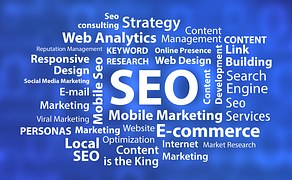Online Marketing Trends That Will Dominate 2017

Regardless of the seemingly never-ending innovations in the world of online marketing, unique, high-quality content will continue to be the most important aspect of any campaign. However, there are some other interesting trends that the cognoscenti believe will dominate throughout 2017. They include:
• Augmented Reality – The popularity of Pokémon Go proves that enthusiasm for AR experiences is real. This year, more brands will be coming out with AR games and ads, and attempts to capitalize on the AR apps that already exist.
• Live Video Streaming – Thanks to faster internet speeds and the ubiquity of mobile devices, live video will be utilized by more and more brands and individuals.
• Data Visualization – The use of infographics will give marketers the ability to provide their target audiences with factual information via charts, graphs, animations, and other data visualization tools.
• Native Advertising – Advertising that eschews traditional formats and includes some editorial content such as a blog post or infographic helps marketers build trust and engagement.
• Niche Market Targeting – In order to break through the growing crowd of online marketing businesses, more brands will attempt to appeal to a narrower range of demographics with more specific topics.
• Immersive Experience – In addition to AR, virtual reality (VR), and formats such as 360 videos help make users experience “living in the moment.” The key is to provide some level of interaction in a way that makes people feel like they’re a part of something bigger.
• Wearable Technology – 2017 will see more smart devices such as the Apple iWatch, Google Glass, Moto 360, and other wearable devices that keep consumers connected to the digital world, all the time.
• User-Generated Content – Over the last few years, there has been a steady increase in the number of brands that use content created by consumers, sometimes called “personalized content experiences,” with their products featured in real-life situations. The trend will continue and grow.
• Dense Content – With attention spans continuing to fall, marketers are going to make sure that every word of every line of content, counts.
• Customer Service Chatbots – More chatbots will be employed in order to make customer service faster and more immediate.
• Social Messaging – Companies and brands will shift more and more to private social messaging apps, such as WhatsApp, which has over one billion users.
• Mobile Domination – Mobile will continue to outpace desktop as digital marketers experiment with more and more mobile searches, mobile payment methods, mobile apps, and mobile-only social applications to create brand value.
• Finally, search algorithms will change; and change again; and maybe even change again, proving that nothing ever stays the same in the SEO universe.
 1-844-47-Click (1-844-472-5425)
1-844-47-Click (1-844-472-5425)






